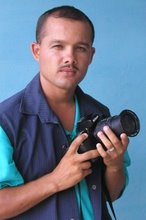amauris@radioangulo.icrt.cu
Villa Don Lino hotel stands out among the most attractive options to spend vacations in Holguín's beach resorts. The environment tinges the coastal north's blue beaches where this seaside resort lies.
 Its architecture bears a resemblance to the houses Cuban Indians lived in when Admiral Christopher Columbus arrived in this archipelago over 500 years ago. These frame-houses can still be seen in Cuba’s today countryside.
Its architecture bears a resemblance to the houses Cuban Indians lived in when Admiral Christopher Columbus arrived in this archipelago over 500 years ago. These frame-houses can still be seen in Cuba’s today countryside.  Its 36 rooms have sea sight and there is direct and close access to the beach from the hotel located in the municipality of Rafael Freyre, some 47 km. away from Holguín city and approximately 57 from Frank País international airport.
Its 36 rooms have sea sight and there is direct and close access to the beach from the hotel located in the municipality of Rafael Freyre, some 47 km. away from Holguín city and approximately 57 from Frank País international airport. The three star Villa Don Lino is a property of Cuban Islazul hotel group and has competent and attentive staff at the service of clients. It includes swimming pool, bar, restaurant and the sale of organized tours to visit the nearby Holguin city and the distant city of Santiago of Cuba, as well as the tour to Bahía Naranjo's aquarium for the famous dolphin-swimming, a unique attraction in this area of the country.
The three star Villa Don Lino is a property of Cuban Islazul hotel group and has competent and attentive staff at the service of clients. It includes swimming pool, bar, restaurant and the sale of organized tours to visit the nearby Holguin city and the distant city of Santiago of Cuba, as well as the tour to Bahía Naranjo's aquarium for the famous dolphin-swimming, a unique attraction in this area of the country.
 The entertainment service offers shows where Cuba's idiosyncrasy stands out, mainly in the field of music and dancing.
The entertainment service offers shows where Cuba's idiosyncrasy stands out, mainly in the field of music and dancing. Don Lino, as it is better known in Holguín, has the ingredients for a leisure destination appropriate to tourists from Canada and Europe flying away from snowfalls and low temperatures during this time of the year.
Don Lino, as it is better known in Holguín, has the ingredients for a leisure destination appropriate to tourists from Canada and Europe flying away from snowfalls and low temperatures during this time of the year.








 The approach to this assessment comes true at Radio Angulo's Web site, where both professionals add pictures to different news genders in the published works.
The approach to this assessment comes true at Radio Angulo's Web site, where both professionals add pictures to different news genders in the published works. 




